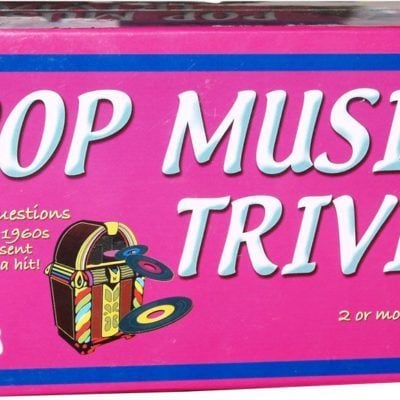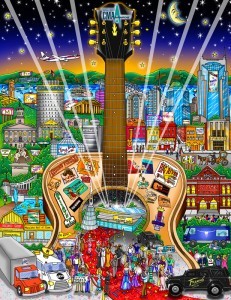
The first record I ever bought with my own money was No Doubt’s Rock Steady. When my friends came over, we’d take turns mimicking Gwen Stefani’s chesty vocals into an old broom handle while the CD whirred in my plastic pink boom box. I still have the CD, and it sounds exactly the same now as it did in 5th grade; the punchy melodies and bass-heavy hooks are preserved forever, trapped in the worn laser disks hard physical matter. Despite having listened to this album countless times, I’m still effectively transported back to the emotional roller coaster of my pre-teen years by the end of the first track. This mysterious relationship between sound and memory I suspect, is why music is like time travel: it is a powerful trigger of emotion, capable of transporting the listener through the heavy sediment of recollection. Just ask any die-hard deadhead, devout festival-goer, or reunion tour enthusiast, music solidifies a communal memory parallel to the historical memory of academia. Mainstream participation is at the heart of pop culture, a social element often dismissed for being decidedly non-academic.

(while pop does ultimately offer a sweetened and approximate perception of reality, a close examination can effectively illustrate temporal distortion in popular American memory, and its divergences from legitimate history. Shifts in American perceptions of time and leisure in the mid-20th century facilitated a dramatic increase in commercial consumption. This development hugely affected the music business, and its effects on pop culture. The record industry played a significant role in marketing the ideas and aesthetics that ultimately composed mainstream content)
There is validity in mass appeal. Popular culture—particularly when paired with mass media—is especially relevant to the study of collective memory. Contrary to to common depictions, subculture and counterculture aren’t the opposite of mainstream culture, just different opinions framed within the same conversation. They are offshoots, not irreconcilable poles. So what is pop culture, exactly? A dictionary definition tells us pop culture is simply, “the commercial culture based on popular taste.” Clothes, movies, magazines, and music are all pertinent facets, and although rarely ever explicitly stated, pop culture serves as a foil to ‘high culture,’ different a cultural product held in higher academic esteem. For example: Da Vinci’s Mona Lisa can be considered high culture, a mustache penciled on her reproduction, pop culture. Popular culture is not new, but it is distinctly marked by postwar collisions with the rise of mass media. This phenomenon is distinctly American, because of the economic prosperity following the Second World War, and the comparably shabby condition of the rest of the Western World.
Pop culture’s fundamentally accessible nature often delegitimizes much of its academic appeal, but this detachment from traditional scholarship does not invalidate it. In fact, the contrary is true; pop culture is important to note in discourse pertaining to patterns and trends in group opinions and memory. Since the majority of even Western populations exist outside of the proverbial University, an examination of historical perceptions outside of academia can provide relevant historical insight into how history is portrayed by mass media. Since music is recorded, and accessibility to recorded music increases every year, correlations between music and their temporal context are often drawn after the fact, serving as a physical historical record for the attentive listener. American music is of particular interest, starting with the sentimental pop music characteristic of the mid-20th century. These recordings were relatively inexpensive and accessible, endowing everyone from the lower-middle class upward with a certain degree of purchasing power. This music was also not intellectually challenging, it was designed and recorded with the intention of being as appealing to as possible and to as many people. This added to the appeal of music in a commercial sense, offering at the same time narcotic escape from “the banalities of social life,” and collective identification with the rest of music’s anonymous audience.
… What do you think?


